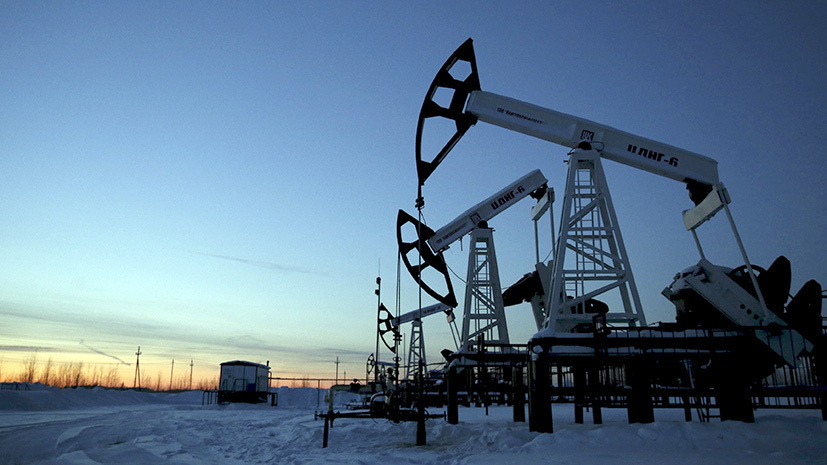On Monday, February 3, the Russian currency shows mixed dynamics during trading on the Moscow Exchange. At the beginning of the day, the dollar gained 0.2% and for the first time since December 4, exceeded the mark of 64 rubles. At the same time, the euro exchange rate rose by 0.05% and also reached its maximum level over the past two months - 70.9 rubles.
However, already in the afternoon the national currency was able to partially recover the losses. So, the dollar exchange rate fell by 0.4% - to 63.6 rubles, and the euro - by 0.6%, to 70.4 rubles.
The official exchange rate of the Central Bank on February 4 was 63.9 rubles per dollar and 70.79 rubles per euro.
The main reason for the course fluctuations was the aggravation of the situation with coronavirus in China, said TeleTrade analyst Mark Goichmann.
“In connection with the spread of the disease, investors are massively selling risky assets. The worsening sentiment in the global financial market in recent weeks has put pressure on the ruble. Moreover, because of the coronavirus, oil prices are also declining, which also affected the dynamics of the currency, ”said Goichmann in an interview with RT.
At the end of December 2019, authorities in the Chinese city of Wuhan reported an outbreak of a respiratory infection of unknown origin. January 9, the Central Television of China with reference to a group of specialists called the cause of the disease a new type of coronavirus. At that time, 15 confirmed cases of infection were detected.
To date, the number of infected has exceeded 17 thousand people, 361 infected have died, another 2296 patients are in serious condition, the State Committee for Health of China reported.
Cases of the disease are already registered in Beijing, Shanghai and other major cities of the country. At the same time, the virus began to spread outside mainland China. The cases were recorded in the USA, Japan, South Korea, Canada, France, Australia, Germany, Russia, Singapore, Thailand, Vietnam, Cambodia and Nepal, as well as Taiwan.
The spread of the disease is expected to risk a massive drop in trade, passenger traffic and fuel demand. As a result, world oil prices have already updated their annual low. To date, the raw materials of the Brent reference brand are being traded near $ 56 per barrel for the first time since January 2019.
- Reuters
- © Sergei Karpukhin
“In connection with the fall in oil prices, OPEC has already announced the possibility of holding an emergency meeting in February. As expected, within the framework of the meeting, a decision may be made to further reduce the production of raw materials in order to support demand and prices for hydrocarbons, ”said Mark Goikhman.
At the same time, the influence of oil prices on the ruble is limited by the budget rule, which stipulates that during the rise in prices for hydrocarbons, the Ministry of Finance buys foreign currency and thereby puts pressure on the ruble. Moreover, in the event of a collapse in the energy market, the ministry ceases operations and pressure on the ruble weakens. As a result of such actions, the dependence of the national currency on oil prices is reduced.
Recently, the effect of the budget rule has weakened the relationship between the ruble and oil, so currency market players have become less likely to react to changes in commodity prices.
“Since the beginning of January 2020, oil prices have fallen by more than 20%. At the same time, the ruble fell by only 5% after a record strengthening, ”said Mikhail Zeltser, stock market expert at BCS Broker, in an interview with RT.
To help ruble
According to RT analysts surveyed, in February the situation with coronavirus will continue to affect ruble exchange rate fluctuations. Meanwhile, experts do not expect a sharp weakening of the national currency until the end of winter.
“In the near future, against the backdrop of news from China, the national currency will be trading near 63–64 rubles per dollar and 69–70 rubles per euro. If the situation with the epidemic in the PRC can be stabilized, then we can see a decrease in the dollar to 62.5 rubles, ”said Artyom Deev, head of the AMarkets analytical department, to RT.
In the event of growing uncertainty in the global financial market in February, the Ministry of Finance and the Central Bank may completely suspend purchases of foreign currency under the budget rule. This point of view in an interview with RT was expressed by Natalya Milchakova, deputy head of the Alpari information and analytical center. According to her, the actions of the authorities will save the Russian currency from significant weakening and keep the dollar in the range of 62–64 rubles, and the euro at around 68–72 rubles.
Moreover, an influx of foreign investment in Russian assets may play in favor of the national currency. According to experts, even in the face of global uncertainty, foreign players are attracted by the stable economic situation of Russia.
“The Russian currency is supported by fairly strong macroeconomic indicators. First of all, this is a record low inflation, a significant budget surplus, a large amount of international reserves and a rather high yield of Russian government bonds, ”added Mark Goikhman.

